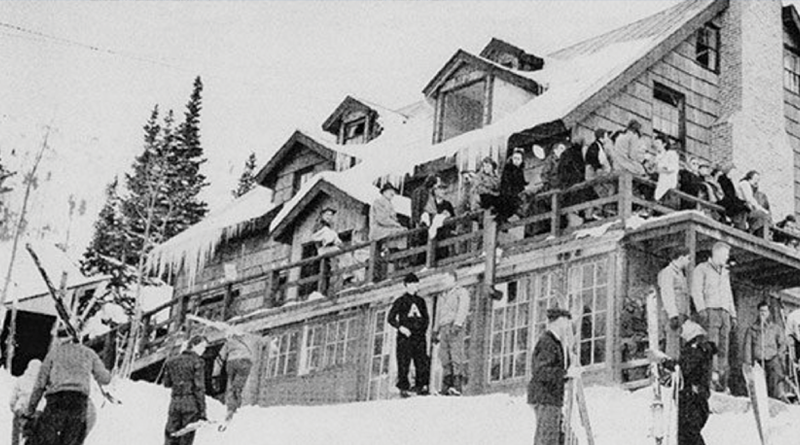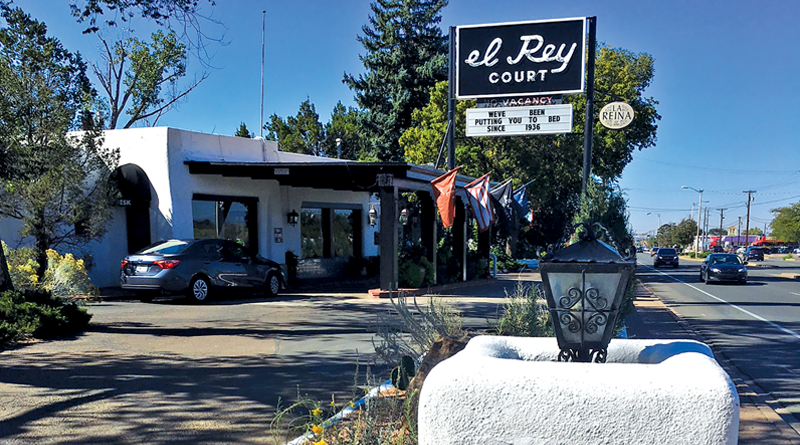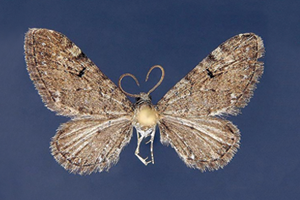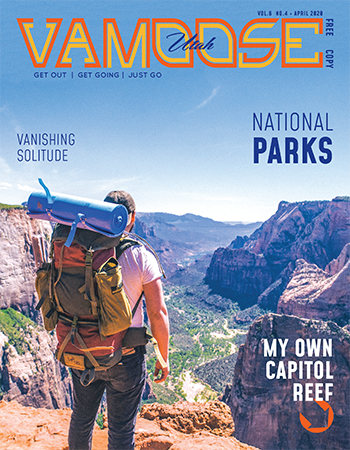Russian novelist Vladimir Nabokov may be most famous for Lolita but Utahns can thank him for their pug
by John Rasmuson
For some, Vladimir Nabokov’s Lolita is the greatest novel of the 20th century. For others, Lolita is an unredeemed story told by a pedophile named Humbert. The fact that the book has Utah roots is another story, but it’s more about road trips and butterflies than nymphets and illicit sex.
The back story is the novelist himself. The son of Russian nobility who fled the Bolsheviks for Europe, Nabokov had published nine books in the Russian language before settling in Massachusetts in 1940 at the age of 44. He taught literature courses at Wellesley College, but his abiding interest was lepidopterology. Among his credits is the butterfly collection at Harvard’s Museum of Comparative Zoology.

Alta Lodge 1945, where Nabokov stayed in the ‘40s
The pursuit of butterflies caused him to crisscross the United States 13 times between 1941 and 1958, logging 200,000 miles on two-lane highways like Route 89. According to Robert Roper’s Nabokov in America, he was drawn to “motor courts that cost a dollar or two a night, in towns so patly, Americanly themselves that a visitor had to smile.” Nabokov’s road trips brought him to New Mexico and Arizona in 1941 and to Utah for the first time in the summer of 1943 where he rented a room at the four-year-old Alta Lodge.
The road trip is an American tradition that has generated its own canon. Think of writers John Steinbeck, Jack Kerouac and William Least Heat Moon. Journalist Charles Kuralt ran six RVs into the ground while reporting from “On the Road” for CBS News. Nabokov’s road trips were devoted to hunting butterflies, but they were also the basis of the fictional travels through “the lovely, trustful, dreamy, enormous country” in Lolita.

On a road trip from Massachusetts to California in 1941, Vladimir Nabokov lodged in Santa Fe’s el Rey Motel, a favorite of Nabokov’s as he criss-crossed the West and “frantically collected butterflies.” It remains in business to this day.
Some forgotten motor court is reimagined as “a motel called Poplar Shade in Utah, where six pubescent trees were scarcely taller than my Lolita,” reports Humbert. At least two of the motels Nabokov visited still operate: Corral Lodges in Afton, Wyo., and el Rey Court in Santa Fe, N.M.

Eupithecia nabokovi : The pug that Nabokov found at Alta Lodge in 1943
Nabokov’s sojourn in Little Cottonwood Canyon was significant for another reason. There, among the “marmots and the Mormons,” Roper writes, Nabokov realized a boyhood dream—to catch and name a theretofore unknown Common Pug moth (Eupithecia vulgata). On Aug. 1, 1943, using a light to attract insects to the lodge windows, he caught a mottled brown one that now bears his name: Nabokov’s Pug (Eupithecia nabokovi.)
It was a “blessed black night in the Wasatch Range,” he wrote in his autobiography.
A writers’ conference brought Nabokov back to Salt Lake City in 1949. Ten years had passed since “the first throb of Lolita went through me,” and he had begun to draft the novel. He wrote in English as his wife drove the blue highways through the Western United States in pursuit of butterflies. The handwritten manuscript was finished in Ashland, Ore., in 1954. It was published in France in 1955 after being rejected by U.S. publishers.
Nabokov returned to Utah in 1956 to hunt butterflies and work on Pnin, his 13th novel. He rented artist Maynard Dixon’s cabin in Mount Carmel, 20 miles west of Zion National Park near the Virgin River. The log cabin is now part of the Maynard Dixon Living History Museum.
Lolita was finally published in the U. S. in 1958. It vaulted to the top of The New York Times best-seller list. Overnight, Nabokov became a well-to-do celebrity. He made no more summer road trips after 1958 and moved to Switzerland in 1961 where he died in 1977.
During his road trips to Utah over the years, Nabokov estimated that he hiked 600 miles in the Wasatch Mountains while stalking moths and butterflies. To mark the 50th anniversary of his novel’s publication, shall we take a cue from Azar Nafisi’s 2003 best-seller, Reading Lolita in Tehran, and make for Alta’s meadows and marmots, Nabokov’s masterwork in hand?



